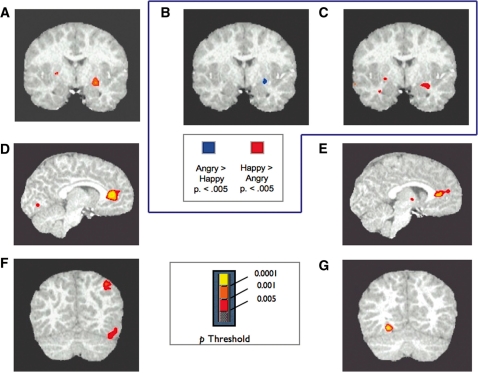Fig. 3.
(A) Results of voxelwise analysis of 14 adults and 14 motion-matched children showing the interaction between age group and expression in a region centered on the putamen. (B) Contrast between angry and happy faces in the group of 14 adults revealing greater putamen activation for angry than happy faces at a threshold of P < 0.005. (C) Contrast between angry and happy faces in the group of 14 children revealing greater putamen activation for happy than angry faces at a threshold of P < 0.005. (D) Results of voxelwise analysis of 14 adults and 14 motion-matched children showing greater activation in anterior cingulate cortex for mothers than strangers. (E) Results of voxelwise analysis of 17 older and 14 younger children, showing greater activation in anterior cingulate cortex for mothers than strangers. (F) Results of voxelwise analysis with 14 adults and 14 motion-matched children showing greater activation in the right fusiform gyrus and inferior parietal lobule for adults than children. (G) Results of voxelwise analysis with 17 older children and 14 younger children showing greater activation in the left fusiform gyrus for younger than older children.

